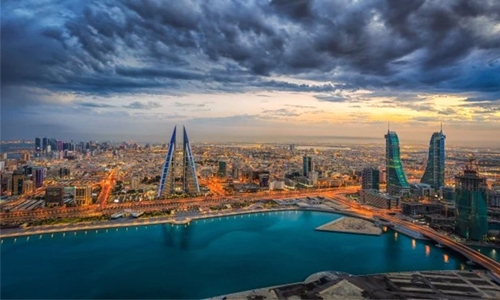Well ahead in Infrastructure
Bahrain has been ranked 14th globally on a measure of ‘Ground and Port Infrastructure’ by the World Economic Forum, thanks to the Kingdom’s total and paved road density. With a score of 5.2, Bahrain outshines many top nations around the globe, with the middle eastern average being 3.7 on a scale of 7.
Bahrain also scores an impressive 3.5 for Air Transport and Infrastructure development (ME average 3.3), and 4.6 for tourist service infrastructure (ME average 4.2) on the WEF index. The Gulf countries, the report points out, have been able to use their natural resource wealth, central geographic location and relative security to develop world-class T&T infrastructure, defined by quality airports, ports, roads, tourist services and some of the world’s leading airlines.
The ranking was part of WEF’s World Travel and Tourism Competitive Index 2019 which benchmarks the T&T competitiveness of 140 economies around the globe. Bahrain on the T&T competitive Index overall rankings scores 3.9 on a scale of 7, opening up new possibilities for the Kingdom in the coming decade with the industry contribution to GDP is expected to rise by nearly 50pc. Placed 64th on the index, Bahrain follows the United Arab Emirates (33rd), while Egypt (65th) is the most improved since the last edition of the index.
“Overall, the region is very price competitive but has challenges with terrorism-related safety and security and international openness. These might be just some of the underlying reasons why the region scores lowest for the Natural and Cultural Resources subindex,” says the report published under the theme of “Travel and Tourism at a Tipping Point.
MENA third-best
The Middle East and North Africa, according to the report, has the third-best improvement average Travel & Tourism Competitiveness Index (TTCI) scores since 2017. The 140 economies covered this year account for approximately 98 per cent of world T&T GDP. The 2019 Travel & Tourism Competitiveness Index (TTCI) assesses 140 economies for T&T competitiveness in four subindexes: Enabling Environment, T&T Policy and Enabling Conditions, Infrastructure, and Natural and Cultural Resources.
Bahrain is placed 36th on the ranking for Enabling Environment (a review of the business environment, safety & security, health & hygiene, ICT readiness among others), 86th for T&T Policy and Enabling Conditions, 53rd for Tourist service infrastructure, 140th for Natural Resources and 113th on Cultural Resources and Business Travel index.
T&T competitiveness
A significant part of the recent progress in T&T competitiveness has come from enhanced air transport infrastructure. Air Transport Infrastructure was the second- most improved pillar in the index thanks to increased airline service offerings in the majority of countries, and rising route capacity across the global network.
According to the report, T&T accounts for a greater share of regional GDP than in any of the other four regions. MENA is also the only region where international visitor spending is greater than domestic visitor spending. Bahrain, in this regard, scores 3.5 and falls in the top 20pc according to the report.
Biz environment shines
When it comes to Business Environment, Bahrain is placed on top with a score of 5.4 (ME average 4.8). Safety and security is another area in which Bahrain shines. TTCI score of Bahrain in this regard is 5.9, whereas the ME average is 5.6. In health and hygiene, Bahrain scores 5.2 (ME 5.3) and 4.9 (ME 4.5) for the Human Resources and Labour market.
High ICT readiness
ICT readiness is another area in which Bahrain outshines others in the region with an impressive score of 5.8. ME average is 5.1. The ranking also shows that the Kingdom is exerting serious efforts in prioritisation of T&T by scoring 4.5, while the Middle Eastern average remains at 4.3.
On the T&T policy and enabling conditions, Bahrain scores 4.5 for Prioritisation of T&T, 2.9 for International openness, 5.8 for price competitiveness and 4.1 for Environment sustainability.
More needed
The report, urging more efforts to expand habit protection and heritage sites, says the region’s historical and religious heritage and geographic features create the potential for significant natural and cultural tourism. It, however, points out that digital demand for MENA’s natural, cultural and entertainment demand is fairly low, indicating potential gaps in marketing and traveller perceptions.
“One potential reason for this gap is continued safety and security concerns,” the report adds. Competitive pricing has been highlighted as one of the single biggest advantages of the region relative to the global average. The TTCI 2019 results show that air transportation, digital connectivity and international openness are advancing in a global context of growing trade tensions and nationalism. Air transport infrastructure improvements show a noticeable increase in route capacity and the number of airlines providing services in individual countries.
International openness is progressing, with lower-income economies leading the way. Digital connectivity has been bolstered by a growing number of individuals using the internet and mobile internet subscriptions, meaning more economies are now in a position to leverage the growing list of digital T&T services.
Travel has also become, for the most part, less expensive and safer, with the Price Competitiveness pillar, for example, showing the greatest percentage increase since 2017. On the other hand, results also show that future demand for transportation services, especially regarding aviation, might outpace improvements in infrastructure capacity.
Japan most competitive
Japan remains Asia’s most competitive travel and tourism economy, ranking 4th globally, while China is by far the largest travel and tourism economy in Asia-Pacific and 13th most competitive globally (up to two spots).
The Philippines has shown improvement, moving up four places to rank 75 globally. Pakistan (121st) remains the least competitive country in South Asia when it comes to T&T, including the region’s least favourable safety and security (134th) conditions.
Related Posts

